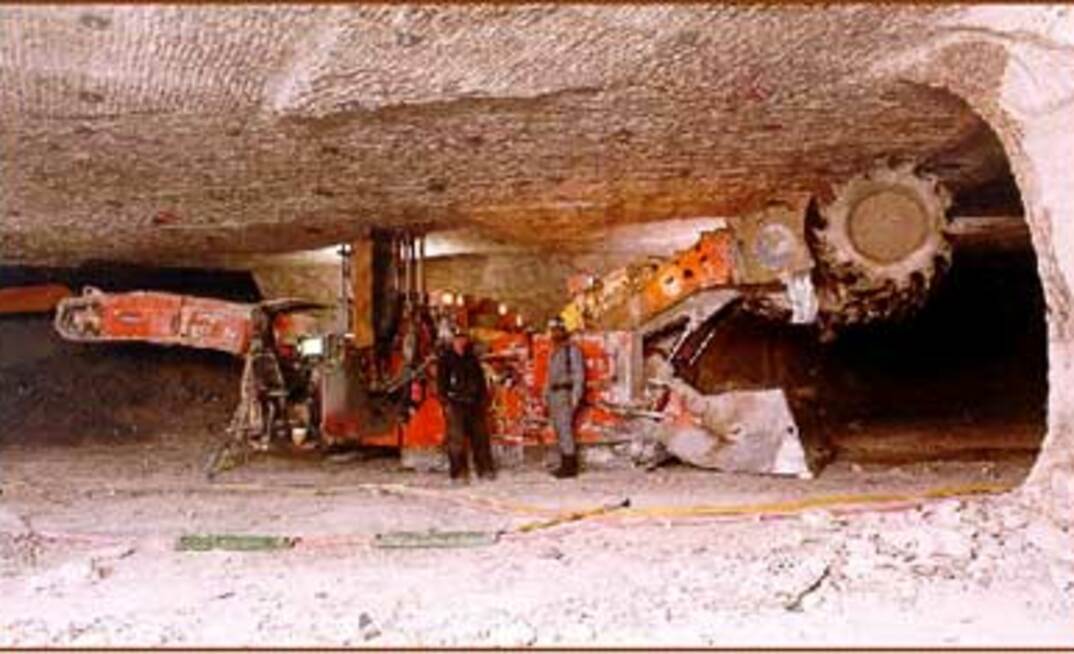Leeming said the productivity from continuous miners had more than tripled in the last ten years, due to higher capacity equipment, increased power, high voltage, increased reliability and utilisation. This was coupled with better infrastructure, improved mine planning and better roof control.
Production rates of up to 630 tonnes per hour and over 4,100 tonnes per shift have been achieved.
The high voltage and greater power, along with improved bits and lacing patterns have improved cutting rates and pick consumption. Joy’s latest continuous miner, the 12HM36, weighs in at 105 to 137t with total power of over 1000kW, including 2x 285kW cutter motors and Joy’s OPTIDRIVE variable frequency drive. OPTIDRIVE has improved tracking ability and manoeuvrability, according to Leeming.
In addition to these engineering modifications introduced over the years are new heavy duty traction system, addition of dual rear conveyor drive, improved high speed gears and introduction of the latest Joy Network Architecture (JNA) control system with enhanced diagnostics.
Leeming said performance figures varied widely, depending on the mineral, mine layout and type of haulage. Continuous haulage systems are capable of 640 tonne per hour and can deliver 50% to70% utilisation. Batch haulage systems using shuttle cars are capable of around 360t/hr and deliver utilisation rates of 30% to 50%.
“Continuous mineral evacuation behind the machine is the only method to achieve high continuous miner utilisation rates of up to 60% to 70%,” he said.
“This system eliminates delays such as waiting for shuttle cars in a batch haulage system and allows the machine to be mining virtually continuously except for repositioning in the roadway.”
Two such systems in use are Joy’s flexible conveyor train (FCT) and the bridge belt conveyor/walking tail end system. The FCT is a crawler mounted flexible belt conveyor capable of negotiating 90 degree bends and tramming around pillars.
Leeming said while converting from drill and blast techniques to continuous miners did improve utilisation and production per hour, there was typically a long lead time in changing the mine culture.
The best performance was achieved at the OCI Big Island Trona Mine in Wyoming, with 6344t achieved in a 12 hour shift. This mine produces 3.3Mt annually with less than 150 employees and each continuous miner produces 650,000 to 1.1Mt per year.
In salt, the Winsford Salt Mine (UK) produced 4123t in a seven hour shift with a single Joy 12HM36 continuous miner working with a bridge belt conveyor and walking tail end. The haulage system gives the CM unrestricted movement in the production area.
Leeming said these production figures have been proven and can be repeated with 120,000t achievable in a month.
Generally the equipment can mine between 3-4Mt between rebuilds in salt, trona and potash and has a life expectancy of over 11Mt.
The use of onboard monitoring systems has become standard practice making available much information on operating parameters, such as temperatures and voltage. Changing machine parameters can help achieve the best configuration for the equipment and extend the life and overhaul periods of units such as gearboxes, pumps and motors.
“There have been instances where data made available on-line to the supplier’s technical experts located in a different country has lead to speedy diagnosis and in one case, the cure of a troublesome alarm fault,” he said.
“It is clear with the rapid improvements in production and productivity that continuous miners will play an increasingly important role in extraction of salt, potash, trona and gypsum mines worldwide in the future,” Leeming said.
























